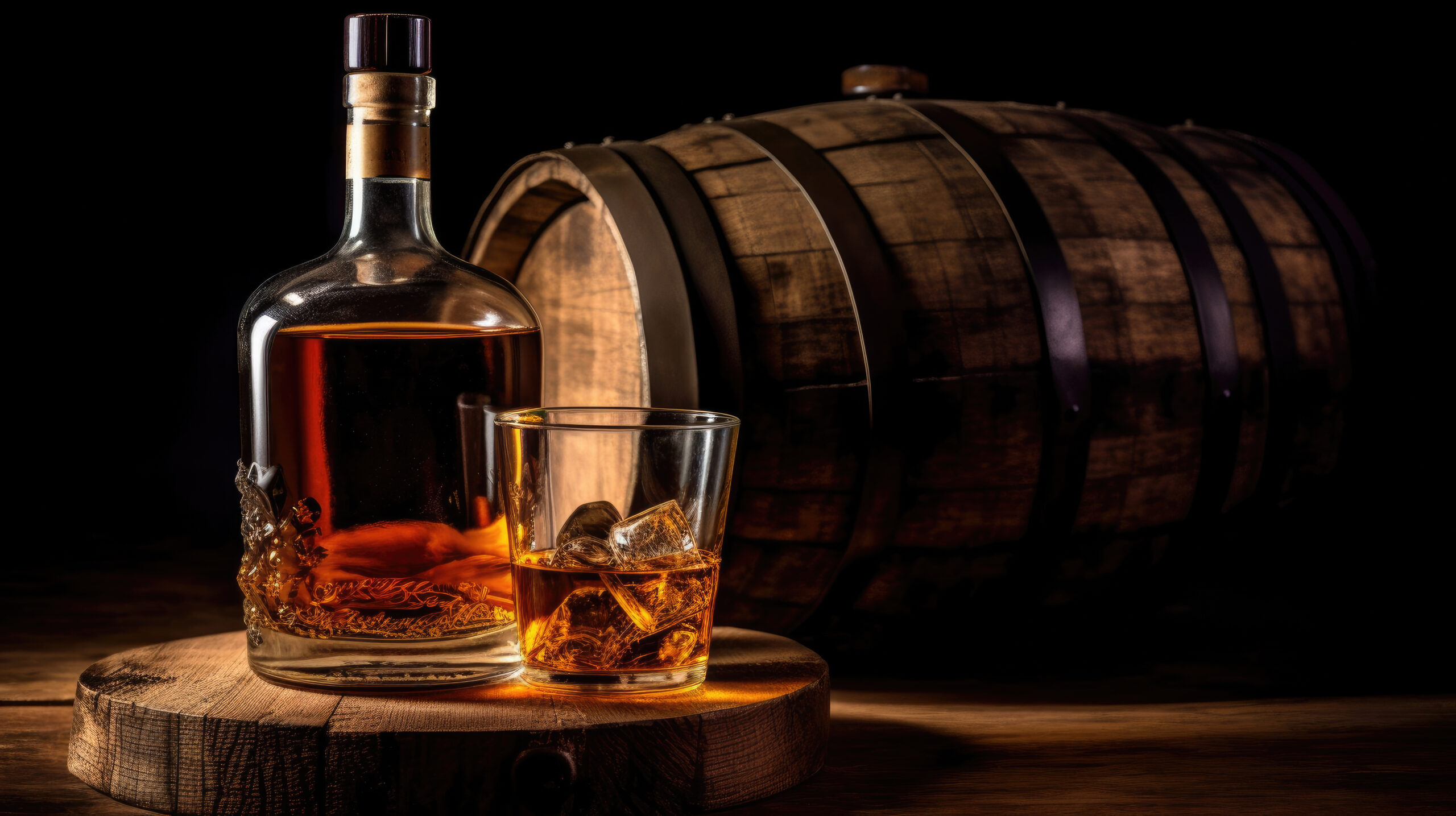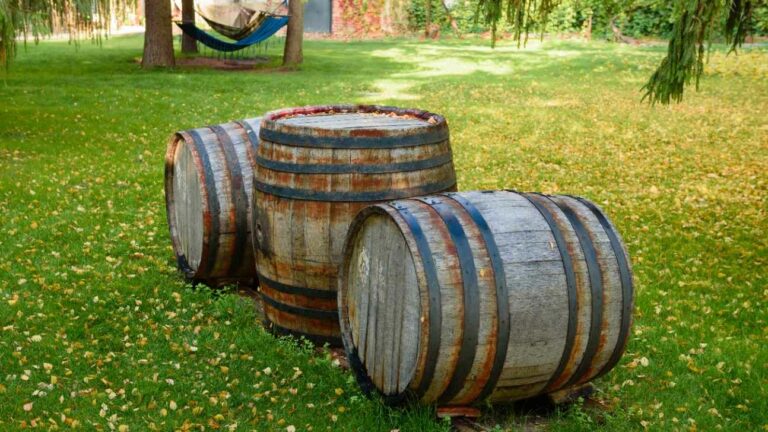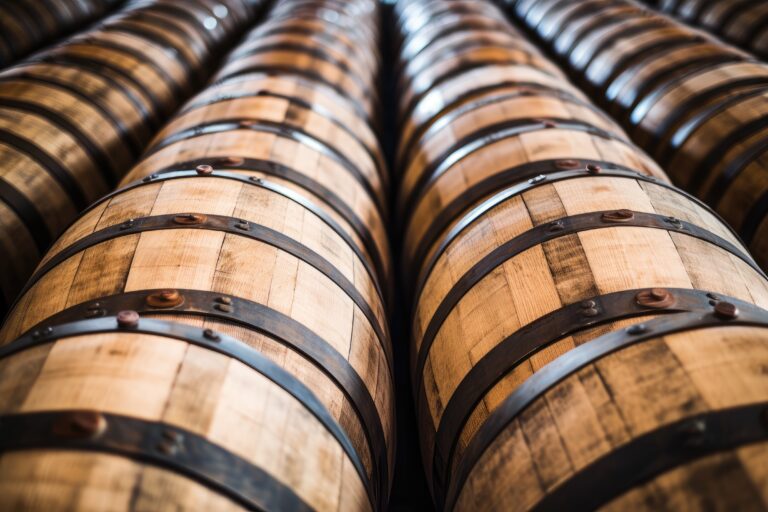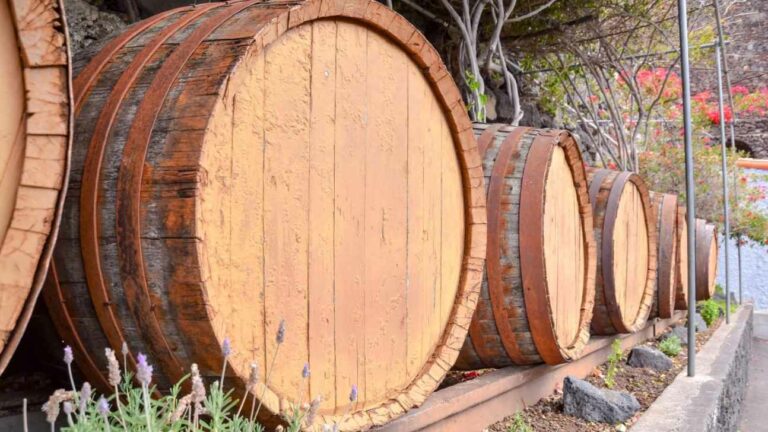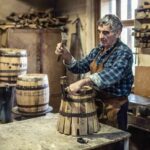Ever wondered just how much glorious whiskey slumbers within those majestic oak barrels? You’ve likely admired them gracing distilleries and cozy whiskey bars, but picturing the sheer number of bottles of your beloved spirit maturing inside can be a delightful puzzle. As a true whiskey enthusiast, you deeply appreciate the artistry and time-honored tradition poured into distilling and aging world-class single malts, bourbons, and ryes. Perhaps you’ve even toured a few distillery tours, getting up close with these wooden vessels, yet the precise barrel volume and the resulting bottle yield have always lingered in your mind. Well, prepare to have that curiosity quenched! We’ve delved into the details to uncover just how many bottles typically emerge from a single whiskey barrel. The answer might just raise your spirits. Keep reading to finally unravel this age-old question.
Introduction to Whiskey Barrels
Have you ever paused to consider the generous amount of whiskey patiently evolving within those characterful charred oak barrels? Turns out, it’s quite a substantial quantity.
A standard whiskey barrel, the workhorse of the industry, generally holds around 53 gallons of spirit. Now, while that might not immediately conjure up a vast lake of liquid gold, a little math reveals its potential: roughly 420 standard-sized bottles of your cherished single malt or robust bourbon. Not a bad haul, wouldn’t you agree?
Master distillers typically allow their whiskey to age for a minimum of 2-3 years within these barrels, a crucial period where the liquid embraces the oak’s rich flavors, mellows its initial intensity, and achieves a smoother character. For more premium and sought-after whiskey brands, this aging process can stretch to an impressive 10-25 years, or even beyond. In theory, a single barrel could hold enough whiskey to keep your glass filled (at a modest one dram per week) for well over a decade!
Of course, the passage of time within the barrel comes with a subtle tax – evaporation, affectionately known as the “angel’s share.” This poetic term acknowledges that not all 420 potential bottles will make their way out of the barrel after two decades of slumber. But this gradual loss is often considered the necessary sacrifice for achieving that exquisitely aged, complex flavor profile that whiskey connoisseurs around the globe so highly prize.
So, the next time you lift a glass of your favorite whiskey, take a moment to appreciate the humble oak barrel that played such a pivotal role in its creation. Its gifts of captivating aroma, nuanced flavor, and that inviting amber hue have patiently transformed raw distillate into a drink of elegance and warmth, drop by patient drop, year after mellow year.
Standard Whiskey Barrel Sizes
When it comes to whiskey barrels, a few standard sizes are commonly employed. The most frequently encountered are the aptly named barrel, the slightly larger hogshead, and the more voluminous puncheon.
A regular barrel typically has a capacity of around 53 gallons of whiskey. This is a widely favored size by numerous distilleries, particularly for the maturation of bourbon.
Stepping up in size, a hogshead boasts a capacity of approximately 63 gallons. You’ll often find Scotch whisky gracefully aging in these larger vessels.
The most substantial of the standard sizes is the puncheon, holding around 72 gallons. These larger barrels are sometimes chosen for the aging of sherry and rum.
The specific type and size of the barrel wield a significant influence on how the whiskey matures and develops its distinctive color and flavor profile. The ratio of the barrel’s surface area to its internal volume plays a key role; smaller barrels tend to accelerate the aging process due to greater contact between the whiskey and the wood. However, larger barrels often contribute to a smoother, more mellow flavor as the whiskey has more “breathing room.”
Ultimately, regardless of the barrel size, the art of aging fine whiskey demands patience and expertise. The true moment of readiness can only be discerned through years of accumulated knowledge and the discerning palate of a seasoned master distiller. Yet, when that whiskey is finally bottled after its long maturation, that initial sip, revealing its rich amber color and intricate layers of flavor, is invariably worth the wait.
Calculating Bottles Per Barrel
To accurately determine the number of bottles yielded from a single whiskey barrel, you need to consider both the barrel size and the standard bottle size. Let’s break down the math, starting with the barrel.
Barrel Size
Whiskey barrels come in various sizes, with the most prevalent being the standard bourbon barrel, holding approximately 53 gallons or roughly 200 liters of whiskey. Some distilleries might utilize slightly larger barrels, around 55 gallons. For our calculation purposes, we’ll stick with the common 53-gallon standard.
To convert gallons to liters, remember that: 1 gallon≈3.785 liters
Therefore, a 53-gallon barrel holds: 53 gallons×3.785gallonliters≈200.605 liters
Bottle Size
A standard bottle of whiskey typically contains 750 milliliters or 0.75 liters.
Bottles Per Barrel Calculation
To calculate the approximate number of bottles per barrel, we divide the total liters in the barrel by the liters per bottle:
0.75 liters/bottle200.605 liters≈267.47 bottles
Rounding down to a whole number, you can generally expect to obtain around 267 standard-sized (750 ml) bottles of whiskey from a full 53-gallon barrel. Keep in mind that the exact number can slightly fluctuate based on factors such as the final alcohol percentage (ABV) after dilution, the barrel’s char level, and temperature variations during aging. However, 267 bottles serves as a reliable estimate when considering bottles per barrel.
Factors That Affect Bottle Yield
The ultimate number of bottles that can be filled from a single whiskey barrel is influenced by a combination of key factors.
Age and evaporation are significant contributors to the reduction of liquid volume within the barrel over time. As the whiskey undergoes its maturation journey, a portion of it naturally evaporates – this is the aforementioned “angel’s share.” Typically, a barrel can lose anywhere from 2% to 6% of its initial volume each year due to evaporation.
The type of barrel employed also plays a role in the final bottle yield. Barrels crafted from different wood varieties, such as American white oak, hickory, or maple, possess varying degrees of porosity, leading to different rates of evaporation. Furthermore, the barrel’s char level, determined by the duration the interior of the barrel is exposed to fire during the charring process, also affects how much liquid permeates the wood. More heavily charred barrels generally exhibit lower evaporation rates.
Barrel size is another obvious determinant. The most common sizes are the standard 53-gallon barrel and the smaller 30-gallon barrel. It stands to reason that a larger barrel will typically yield a greater number of bottles. Some distilleries also experiment with unique barrel sizes, ranging from petite 5-gallon barrels to massive 250-gallon vessels, each producing a corresponding range in bottle yields.
Finally, the bottle size chosen by the distillery directly impacts the final count. Standard whiskey bottle sizes are often 750ml, 1 liter, or 1.75 liters. Distilleries make decisions about bottle sizes based on their brand identity, pricing strategy, and consumer preferences. All other factors being equal, a distillery will naturally obtain more bottles from a single barrel if they opt for smaller bottle sizes.
In essence, the final yield from a whiskey barrel is a result of these interconnected details. However, with a little calculation, you can gain a solid understanding of the potential number of delicious bottles awaiting their release.
Barrel Proof and Dilution
When a whiskey barrel is initially filled, it’s typically filled to its maximum capacity with what’s known as “barrel proof” spirit. This signifies that the alcohol by volume (ABV) at this stage is usually quite high, often ranging between 60% and 70%.
Dilution
For the purpose of bottling and consumer enjoyment, this potent “barrel proof whiskey” undergoes a process of dilution with water to reduce the ABV to a more palatable range, typically around 40% to 50% for most major whiskey brands. This dilution not only makes the whiskey safer and more approachable for consumption but also plays a crucial role in unlocking and enhancing its intricate flavors. As water is carefully introduced, the whiskey’s aromatic compounds become more pronounced, and the various flavor notes develop further complexity.
While some distilleries offer “barrel proof” bottlings for those who prefer their whiskey in its undiluted state, the majority of brands and consumers favor the diluted range of 40-50% ABV, which is generally considered to provide the optimal balance of flavor intensity and overall enjoyment.
So, there you have it – that barrel of whiskey that has patiently aged for years actually contains a high-proof distillate that is subsequently brought down to the familiar 80-100 proof (40-50% ABV) you find on the store shelves. While barrel aging is undeniably critical for the development of complex flavors, the processes of dilution and bottling are equally important in crafting a balanced and delicious whiskey ready for your glass. The precise formula employed for dilution and bottling is unique to each particular brand and expression, and much like the aging process itself, it’s truly an art form in its own right.
Average Bottle Count for Popular Whiskey Brands
The average bottle count for popular whiskey brands can exhibit considerable variation depending on the specific type of whiskey and the size of the barrels they utilize. For instance:
Bourbon
- Maker’s Mark typically uses barrels that yield approximately 150 to 160 bottles of their distinctive bourbon whiskey.
- Jim Beam’s standard bourbon barrels can hold enough whiskey to produce up to around 210 bottles.
Scotch Whisky
- Glenfiddich’s renowned single malt scotch whisky barrels generally yield between 190 and 210 bottles.
- The Macallan, another esteemed Scotch whisky producer, also utilizes barrels that can hold between 190 and 220 bottles of their aged single malts.
Irish Whiskey
- Jameson’s popular blended Irish whiskey barrels tend to produce around 200 bottles.
- Bushmills’ distinguished single malt Irish whiskey barrels commonly yield between 160 and 180 bottles.
As these examples illustrate, there isn’t a universal standard, and bottle counts can range from approximately 150 up to 220 bottles per barrel, depending on the specific distillery and the type of whiskey being produced. The actual number for any given barrel ultimately depends on factors such as the barrel’s precise dimensions and shape, the type of wood utilized in its construction, the barrel’s char level, and, of course, the initial volume of liquid placed into the barrel.
Getting the Most Out of Your Barrels
Maximizing the lifespan and quality contribution of your whiskey barrels is crucial for any distillery. Given that barrels represent a significant investment, ensuring their longevity while extracting the best possible flavor for your whiskey is paramount.
Rotating barrels
Implement a system of rotating the barrels within the barrelhouse, moving them from higher to lower positions. Whiskey tends to extract more oak flavors and mature more rapidly in the warmer, upper levels of the warehouse. Rotating the barrels every 6 to 12 months ensures that each barrel spends time at different temperature levels. This practice promotes more even maturation across your stock and helps prevent the over-extraction of oak flavors in barrels that remain in warmer areas for extended periods.
Controlling temperature
The ambient temperature within the barrelhouse directly influences the speed at which your whiskey matures. Warmer temperatures accelerate the chemical reactions occurring within the barrels, while cooler temperatures slow them down. For most distilleries, maintaining an optimal temperature range of 60 to 70 degrees Fahrenheit is ideal. Regularly monitor the barrelhouse temperature and make necessary adjustments using ventilation systems, heaters, or coolers to maintain this range.
Checking for leaks
Conduct regular inspections of your barrels for any signs of leaks or cracks and address them promptly. While some evaporation is a natural part of the aging process, excessive loss due to leaks can negatively impact both the quality and the final yield of your whiskey. Repairing leaks also helps prevent unnecessary oxidation of the whiskey.
Rotating barrel positions
For the most efficient utilization of space within your barrelhouse, consider rotating the physical positions of the barrels on the same level as well as between levels. Moving barrels from top to bottom and rearranging them on the same floor helps ensure more uniform exposure to any subtle temperature and humidity variations that might exist within the barrelhouse. This practice also prevents any single area from becoming overly saturated with whiskey vapors, which could potentially lead to the development of undesirable off-notes in the maturing spirit.
By implementing diligent barrel management practices and a consistent rotation schedule, you’ll optimize the flavor development and maturation process within your barrels. This ultimately translates to higher quality whiskey and improved profitability for your distillery.
Tips for Barrel Aging Whiskey at Home
For the adventurous whiskey enthusiast looking to experiment with aging at home, you’ll need a few essential supplies:
Barrel: Opt for a small barrel, ranging from approximately 2 to 10 liters in capacity. Oak barrels are the preferred choice as they impart the most desirable flavors. Consider using charred barrels for a richer color and more pronounced flavor development in your whiskey.
Whiskey: Select a whiskey that you already enjoy drinking, such as a bourbon, rye, or single malt. The aging process will mellow its initial character and introduce new layers of flavor complexity.
Patience: Home aging whiskey is a process that requires time. Sample your whiskey periodically, perhaps every 3 to 6 months. It can take anywhere from 6 months to over 2 years for the whiskey to reach your desired level of smoothness and flavor integration.
Location: Store your barrel in a location with a relatively stable temperature, away from direct heat sources or direct sunlight. Attics and garages can often provide suitable environments. Be aware that the whiskey will naturally evaporate as it ages, leading to a reduction in volume.
Checking Progress: Once a month, monitor the amount of whiskey that has evaporated. Top off the barrel with more of the same whiskey to minimize excessive oxidation. Use a barrel thief (a specialized tool) to carefully extract small samples of the whiskey for tasting and to track its progress.
When the whiskey reaches your preferred taste profile, it’s time to bottle and savor your creation! The home-aged whiskey will likely exhibit a unique smoky, oaky character that distinguishes it from the original spirit. Home aging is a rewarding and hands-on way to craft a truly personalized whiskey. With a little patience and attention, you’ll soon be enjoying a finely aged spirit of your own making.
FAQ: Answering Common Whiskey Barrel Questions
How many bottles of whiskey can you get from a single barrel? On average, a standard 53-gallon barrel will yield approximately 150 to 200 bottles of whiskey. The precise number is influenced by factors such as the specific type of whiskey, the exact barrel size, and the final bottled proof of the whiskey.
How long does whiskey age in a barrel? The aging period for whiskey in barrels can range from a minimum of 2 years to upwards of 50 years or more for exceptionally high-end spirits. For bourbon, a minimum aging of 2 years is legally required, but 4 to 6 years is more typical for quality expressions. For Scotch whisky, aging periods of 12 to 18 years are common. Generally, the longer a whiskey ages in the barrel, the more complex and nuanced its flavor profile becomes.
What kind of wood are whiskey barrels made from? The most popular wood choices for crafting whiskey barrels are American white oak and charred oak. Oak barrels impart desirable flavor and aroma compounds to the whiskey, such as vanilla and spice notes. Charred barrels, where the interior has been intentionally burned, contribute smoky undertones. Some distillers also experiment with other wood varieties like hickory, maple, or chestnut to achieve unique flavor characteristics.
Do all whiskeys need to be aged in barrels? No, not all styles of whiskey undergo barrel aging. Some whiskeys are bottled immediately after the distillation process. These are often referred to as “white dog” or “new-make” whiskeys. However, the majority of popular whiskey styles, including bourbon, Scotch, and Tennessee whiskey, do require barrel aging to develop their distinctive flavor and aroma profiles. In essence, barrel aging is what imparts the signature taste to most whiskeys.
Can old whiskey barrels be reused? Yes, whiskey barrels are frequently given a second life. After their initial use in aging one type of whiskey, a barrel might be employed again to age the same type or a different variety of whiskey. With each subsequent use, the barrel tends to impart more subtle flavor nuances to the spirit. Additionally, some distillers and other beverage producers repurpose old whiskey barrels to age other spirits like rum, brandy, or even wine, adding interesting layers of complexity to those drinks as well.
Final Thoughts
So there you have it – the inside story on just how many bottles of whiskey you can expect to get from a single barrel. As you’ve learned, there’s no single definitive number, as it depends on a fascinating interplay of factors. However, the general range of 150 to 250 bottles serves as a reliable benchmark. The next time you’re savoring a glass of your favorite bourbon or Scotch, you can impress your companions with your newfound understanding of barrels and the bottling process. And the next time you encounter a barrel patiently aging in a distillery, you’ll possess a deeper appreciation for the time, skill, and meticulous care that goes into crafting the amber liquid nestled within.
